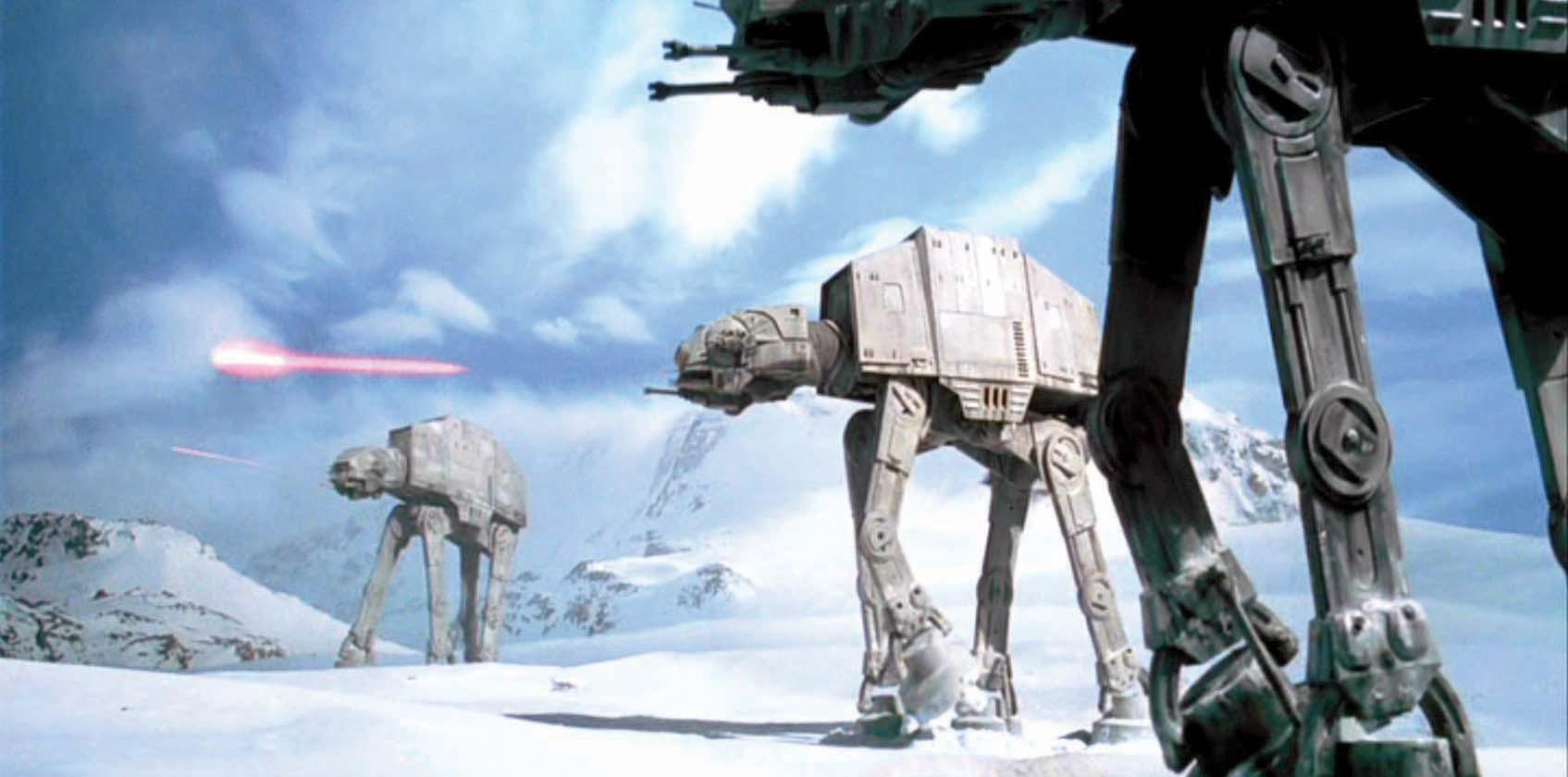 |
| Imperial walkers advance towards the Rebels' not-so-secret base |
Perhaps the most memorable part in all of Homer's "The Iliad" is that of the Trojan Horse, which brought forth the end of the decade long Trojan War. In a successful attempt to fool the Trojans, the Greeks all but abandoned their siege, save for the elite troops hidden in the massive wooden "trophy". As everyone knows, the Trojans brought it into their walled city and at a convenient time to the Greeks, they attacked. While the Imperial assault on Echo base may not have been a covert mission but rather a head-on attack, Homer's influence on Lucas is abundantly clear as the armoured troop carriers devastate Rebel defences in a modern day Trojan slaughter.
When considering other similarities between both myths, one of the most significant is the relationship between Yoda's hut on Dagobah and the Oracle of Delphi. On Dagobah, Luke learns many things. He learns of the force, faces the fear of Vader in the cave, and receives the prophecy about his friends being in trouble on Bespin, and what would happen if he were to save them. At the Oracle of Delphi, many important figures came for guidance, including King Croesus and the Oracles influence is central in the plot of Oedipus Rex. Luke also underwent physical training under Yoda, echoing the highly physical and sacrificial Pythian Games. Even in death, Yoda is there to impart wisdom on Luke.
 |
The links to the images are here, here, here, and here.


No comments:
Post a Comment